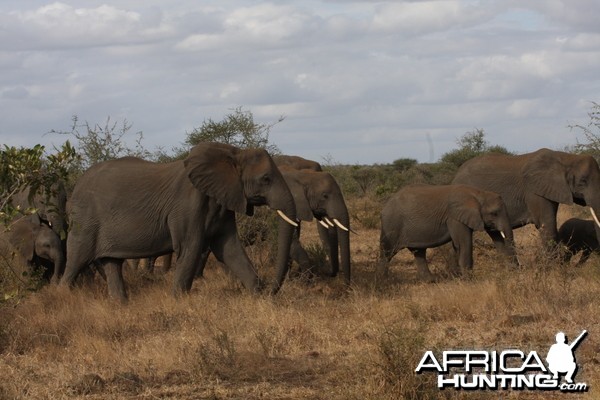ibie
AH veteran
Savanna Elephant

Common Name
Savanna elephant
Scientific Name
Loxodonta africana Africana
Location
All of sub-Saharan Africa except for Central Africa’s dense tropical forest

Savanna elephants are found throughout the grassy plains and bushlands of Africa. They contribute to the maintenance of the savannas and open woodlands by reducing tree densities. Without them, many other plants and animals would not survive in the woodland areas. Savanna elephants are well studied and populations are easily estimated as a result of their visibility within the open areas where they live.
Physical Description
Savanna elephants are larger than forest elephants, and their tusks curve outward. There are differences in the size and shape of their skull and skeleton compared to the forest elephant.
Diet
As a result of their habitat, savanna elephants are often found grazing on grasses, but they also consume a wide variety of plants and fruits. This selection varies depending on the time of year; during the rainy season the elephant will feed more on grass than during the dry season.
Reproduction
African elephants can breed all year, but there is a slight peak in births in savanna elephants during the rainy season.
Did you know?
African elephants communicate across large distances at a low frequency that cannot be heard by humans.
Social Structure
In the savanna subspecies, each family unit usually contains 10 individuals and the bulls associate with these herds. Several family units often join together to form a 'clan' consisting of up to several hundred members led by a large female.

Common Name
Savanna elephant
Scientific Name
Loxodonta africana Africana
Location
All of sub-Saharan Africa except for Central Africa’s dense tropical forest
Savanna elephants are found throughout the grassy plains and bushlands of Africa. They contribute to the maintenance of the savannas and open woodlands by reducing tree densities. Without them, many other plants and animals would not survive in the woodland areas. Savanna elephants are well studied and populations are easily estimated as a result of their visibility within the open areas where they live.
Physical Description
Savanna elephants are larger than forest elephants, and their tusks curve outward. There are differences in the size and shape of their skull and skeleton compared to the forest elephant.
Diet
As a result of their habitat, savanna elephants are often found grazing on grasses, but they also consume a wide variety of plants and fruits. This selection varies depending on the time of year; during the rainy season the elephant will feed more on grass than during the dry season.
Reproduction
African elephants can breed all year, but there is a slight peak in births in savanna elephants during the rainy season.
Did you know?
African elephants communicate across large distances at a low frequency that cannot be heard by humans.
Social Structure
In the savanna subspecies, each family unit usually contains 10 individuals and the bulls associate with these herds. Several family units often join together to form a 'clan' consisting of up to several hundred members led by a large female.
Last edited by a moderator:

